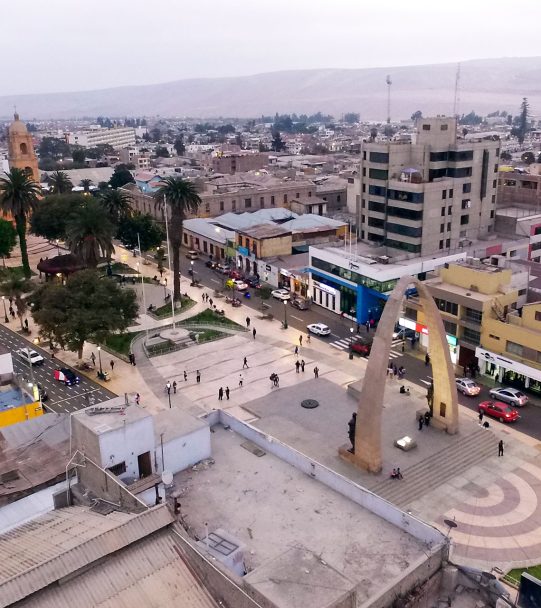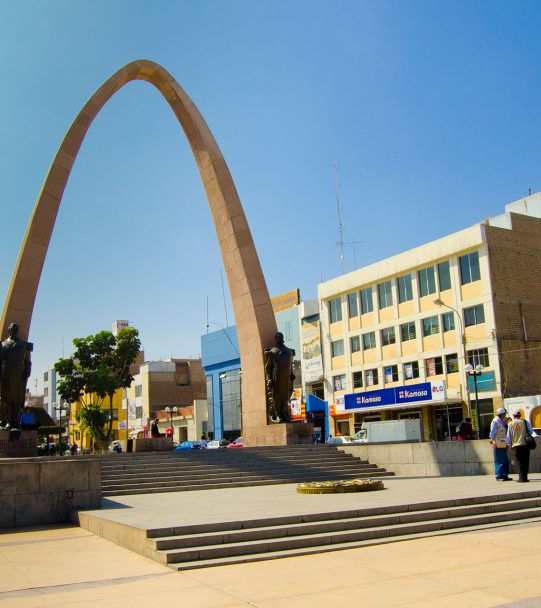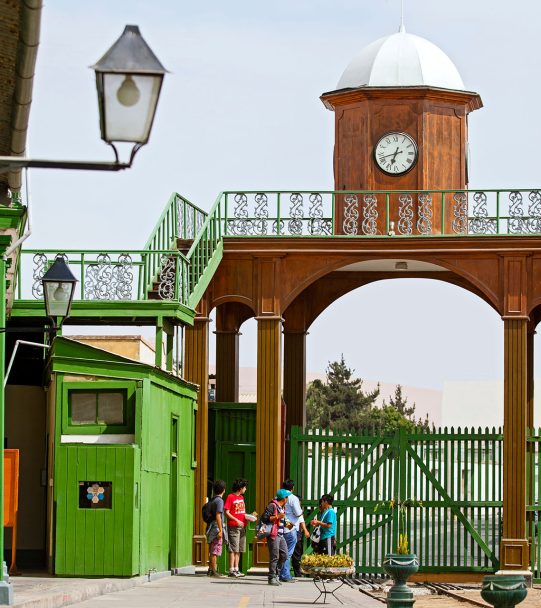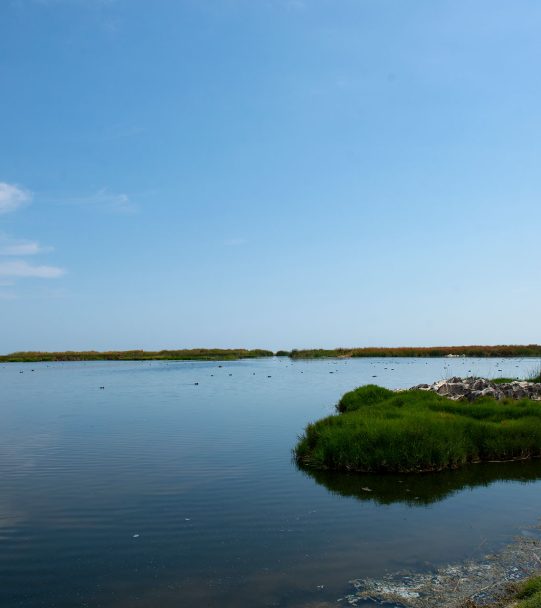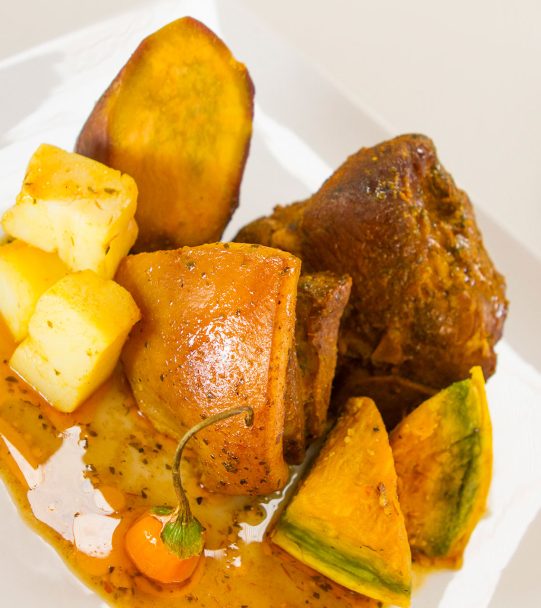Tacna
Tacna, at the southern end of the Peru, The region of the Andes awaits you with a captivating mix of history, arid landscapes and intense flavors. With fertile valleys, deserts that hide millenary geoglyphs and hot springs in the middle of the Andean silence, this department surprises at every step. Its capital, Tacna, combines republican architecture, museums, lively culture and a dynamic cross-border trade with Chile, especially with the city of Arica. Here, the fusion gastronomy and the renowned pisco tacneño reflect identity and tradition. Tacna is history, hospitality and natural diversity on the southern border of the country.
Connectivity
You can reach the department of Tacna by road by private vehicle or by bus through routes that connect the city of Tacna, its capital, with major cities such as Arequipa and Lima, the trip takes between 5 and 19 hours respectively. For those who prefer to fly, the International Airport Coronel FAP Carlos Ciriani Santa Rosa, is very close to the center of the city of Tacna and offers regular flights to Lima facilitating a quick and comfortable arrival for visitors. Tacna awaits you with the warmth of its people.
Tacna
Subscribe to receive news about Caminos Andinos
Temperature
Ranges from 11°C to 26°C
Weather
Tempering
More destinations
Activities and attractions
Tacna invites you to explore a land where history, nature and cultural identity coexist in every corner. Tour its capital city and visit the imposing Cathedral, museums and monuments such as the Alto de la Alianza. Discover the rock art of Miculla and the millenary paintings of Toquepala. Relax among geysers, high Andean lagoons and coastal wetlands. Live its festivities with faith and tradition, from the emotional Procession of the Flag to the Lord of Locumba. Taste the spicy tacneña style, adobo or regional casserole. Visit vineyards on the Pisco Route and get to know the Tacna Olive, both national prides with Denomination of Origin. Tacna is memory, flavor and living culture of southern Peru.
Tacna Cathedral
PHOTO: PROMPERÚ
Petroglyphs
PHOTO: PROMPERÚ
Calientes Geysers
PHOTO: PROMPERÚ
Ite Wetlands
PHOTO: PROMPERÚ
Passacaglia during the Tacna Carnival
PHOTO: PROMPERÚ
Adobo tacneño
PHOTO: PROMPERÚ
Green and black olives
PHOTO: PROMPERÚ
Pisco stills at Vista Alegre winery
PHOTO: PROMPERÚ
Discover what we do
-
-
CULTURE
City of Tacna: Museums and culture
In the heart of Tacna, the visitor can explore a vibrant cultural route. It begins at the imposing Tacna Cathedral, an architectural symbol of neo-Renaissance style. Nearby, the Regional Historical Museum offers an in-depth look at the independence and republican past of southern Peru. The Jorge Basadre House Museum pays homage to the illustrious Tacna historian. The Locomotive Park preserves the railroad engine that participated in the War of the Pacific, and, on the outskirts, the Alto de la Alianza Monumental Complex honors the heroes of that historic battle.
Rock art:
Discover the Miculla Archaeological Complex, an open-air museum 22 km northeast of Tacna, in the Viejo-Miculla Valley, Pachía district. There you will see petroglyphs carved in limestone rocks, depicting hunting scenes, ritual dances, daily life and wildlife. ancestral. Complete your route with the Toquepala Caves, located in Ilabaya, which house cave paintings from approximately 7,600 BC, considered one of the oldest testimonies of Andean prehistoric art.
-
-
NATURE
In Tacna, the nature surprises in every corner. Tour the Valley of the Geysers in Candarave, a geothermal spectacle with more than 85 active geysers and fumaroles at high altitude. A few kilometers away, Laguna Aricota dazzles at 2,800 meters above sea level with serene landscapes, high Andean bird watching and trout fishing. On the coast, the Ite Wetlands are home to more than 126 species of migratory and resident birds, and, in the heart of the greenery, the Panina Waterfall offers coolness, hiking, and unforgettable views.
-
-
ANCESTRAL COMMUNITIES AND RURALITY
In the department of Tacna, the community Aymara people keep their traditions alive through rituals, music, dances, weaving and agricultural practices in areas such as Tarata, Candarave and the province of Tacna. These populations preserve their language, celebrations linked to the Pachamama and ways of life inherited from their ancestors. Tourists can experience a living culture that is expressed in every festival, market and high Andean landscape, a reflection of the ancestral legacy that is still present.
Holidays:
Tacna invites you to experience its most emblematic festivities, where history, faith and culture come alive. In February, the Carnival displays comparsas and traditional dances, as well as the feast of the Virgen de la Candelaria. In May, the Fiesta de las Cruces fills towns and hills with music, Andean rituals, color and devotion, offering authentic experiences to the traveler. In August, Tacna Week commemorates its reincorporation into Peru with the emotional Procession of the Flag, parades and fairs. The Feast of the Lord of Locumba in September summons thousands of pilgrims to its sanctuary.
-
-
GASTRONOMY
Get ready for an explosion of taste with the most emblematic dishes of Tacna. Start with picante a la tacneña, an intense stew made with lamb meat, potatoes and aji colorado, cooked in a clay pot. Enjoy the adobo tacneño, pork marinated in aji panca bell pepper and spices, served with serrano bread. Taste the cazuela tacneña, a comforting soup of creole chicken with Andean vegetables. And don't miss the charquicán tacneño, prepared with meat, pumpkin and potato, which pays homage to the high Andean roots of this land. In Tacna, each dish holds centuries of history, identity and flavor.
Pisco and olives: Flavors of origin and tradition
In Tacna, Peruvian Pisco with appellation of origin is produced in the valleys of Locumba, Sama and Caplina, thanks to eight regional wineries that produce around 50,000 liters per year for local consumption. These valleys share the geographical conditions recognized by the Pisco Denomination of Origin. Travel the Pisco Route in Tacna, visiting vineyards and wineries such as Miculla, where pisco from Italia grapes and other artisanal liquors are produced.
In Tacna, the Tacna Olive is a product with Designation of Origin, officially recognized in December 2014, which supports its unique regional quality. It is grown in the valleys of La Yarada, Sama and Ite, at altitudes between 25 and 800 meters, under unique ecological conditions. Each olive, Sevillana del Peru or Criolla variety, stands out for its firm texture and distinctive flavor. Tourists can take the Olive Route, visiting crops and local producers, to get to know this treasure of southern Peru.
-
-
CRAFTS
Admire the skill of the craftsmen tacneños in the weavings with geometric designs and the representation of life in the multiple forms that the clay takes in the clay pottery and cold ceramics. It also stands out for its costume jewelry, jewelry, decorative painting, stamping and embossing in leather, fine wood carving, beadwork and the beauty of the pieces in gold and silver, as well as the technique in sandblasted cardboard with motifs of monuments and houses tacneñas. Take a souvenir of his art!
CULTURE
City of Tacna: Museums and culture
In the heart of Tacna, the visitor can explore a vibrant cultural route. It begins at the imposing Tacna Cathedral, an architectural symbol of neo-Renaissance style. Nearby, the Regional Historical Museum offers an in-depth look at the independence and republican past of southern Peru. The Jorge Basadre House Museum pays homage to the illustrious Tacna historian. The Locomotive Park preserves the railroad engine that participated in the War of the Pacific, and, on the outskirts, the Alto de la Alianza Monumental Complex honors the heroes of that historic battle.
Rock art:
Discover the Miculla Archaeological Complex, an open-air museum 22 km northeast of Tacna, in the Viejo-Miculla Valley, Pachía district. There you will see petroglyphs carved in limestone rocks, depicting hunting scenes, ritual dances, daily life and wildlife. ancestral. Complete your route with the Toquepala Caves, located in Ilabaya, which house cave paintings from approximately 7,600 BC, considered one of the oldest testimonies of Andean prehistoric art.
NATURE
In Tacna, the nature surprises in every corner. Tour the Valley of the Geysers in Candarave, a geothermal spectacle with more than 85 active geysers and fumaroles at high altitude. A few kilometers away, Laguna Aricota dazzles at 2,800 meters above sea level with serene landscapes, high Andean bird watching and trout fishing. On the coast, the Ite Wetlands are home to more than 126 species of migratory and resident birds, and, in the heart of the greenery, the Panina Waterfall offers coolness, hiking, and unforgettable views.
ANCESTRAL COMMUNITIES AND RURALITY
In the department of Tacna, the community Aymara people keep their traditions alive through rituals, music, dances, weaving and agricultural practices in areas such as Tarata, Candarave and the province of Tacna. These populations preserve their language, celebrations linked to the Pachamama and ways of life inherited from their ancestors. Tourists can experience a living culture that is expressed in every festival, market and high Andean landscape, a reflection of the ancestral legacy that is still present.
Holidays:
Tacna invites you to experience its most emblematic festivities, where history, faith and culture come alive. In February, the Carnival displays comparsas and traditional dances, as well as the feast of the Virgen de la Candelaria. In May, the Fiesta de las Cruces fills towns and hills with music, Andean rituals, color and devotion, offering authentic experiences to the traveler. In August, Tacna Week commemorates its reincorporation into Peru with the emotional Procession of the Flag, parades and fairs. The Feast of the Lord of Locumba in September summons thousands of pilgrims to its sanctuary.
GASTRONOMY
Get ready for an explosion of taste with the most emblematic dishes of Tacna. Start with picante a la tacneña, an intense stew made with lamb meat, potatoes and aji colorado, cooked in a clay pot. Enjoy the adobo tacneño, pork marinated in aji panca bell pepper and spices, served with serrano bread. Taste the cazuela tacneña, a comforting soup of creole chicken with Andean vegetables. And don't miss the charquicán tacneño, prepared with meat, pumpkin and potato, which pays homage to the high Andean roots of this land. In Tacna, each dish holds centuries of history, identity and flavor.
Pisco and olives: Flavors of origin and tradition
In Tacna, Peruvian Pisco with appellation of origin is produced in the valleys of Locumba, Sama and Caplina, thanks to eight regional wineries that produce around 50,000 liters per year for local consumption. These valleys share the geographical conditions recognized by the Pisco Denomination of Origin. Travel the Pisco Route in Tacna, visiting vineyards and wineries such as Miculla, where pisco from Italia grapes and other artisanal liquors are produced.
In Tacna, the Tacna Olive is a product with Designation of Origin, officially recognized in December 2014, which supports its unique regional quality. It is grown in the valleys of La Yarada, Sama and Ite, at altitudes between 25 and 800 meters, under unique ecological conditions. Each olive, Sevillana del Peru or Criolla variety, stands out for its firm texture and distinctive flavor. Tourists can take the Olive Route, visiting crops and local producers, to get to know this treasure of southern Peru.
CRAFTS
Admire the skill of the craftsmen tacneños in the weavings with geometric designs and the representation of life in the multiple forms that the clay takes in the clay pottery and cold ceramics. It also stands out for its costume jewelry, jewelry, decorative painting, stamping and embossing in leather, fine wood carving, beadwork and the beauty of the pieces in gold and silver, as well as the technique in sandblasted cardboard with motifs of monuments and houses tacneñas. Take a souvenir of his art!
 Skip to content
Skip to content



